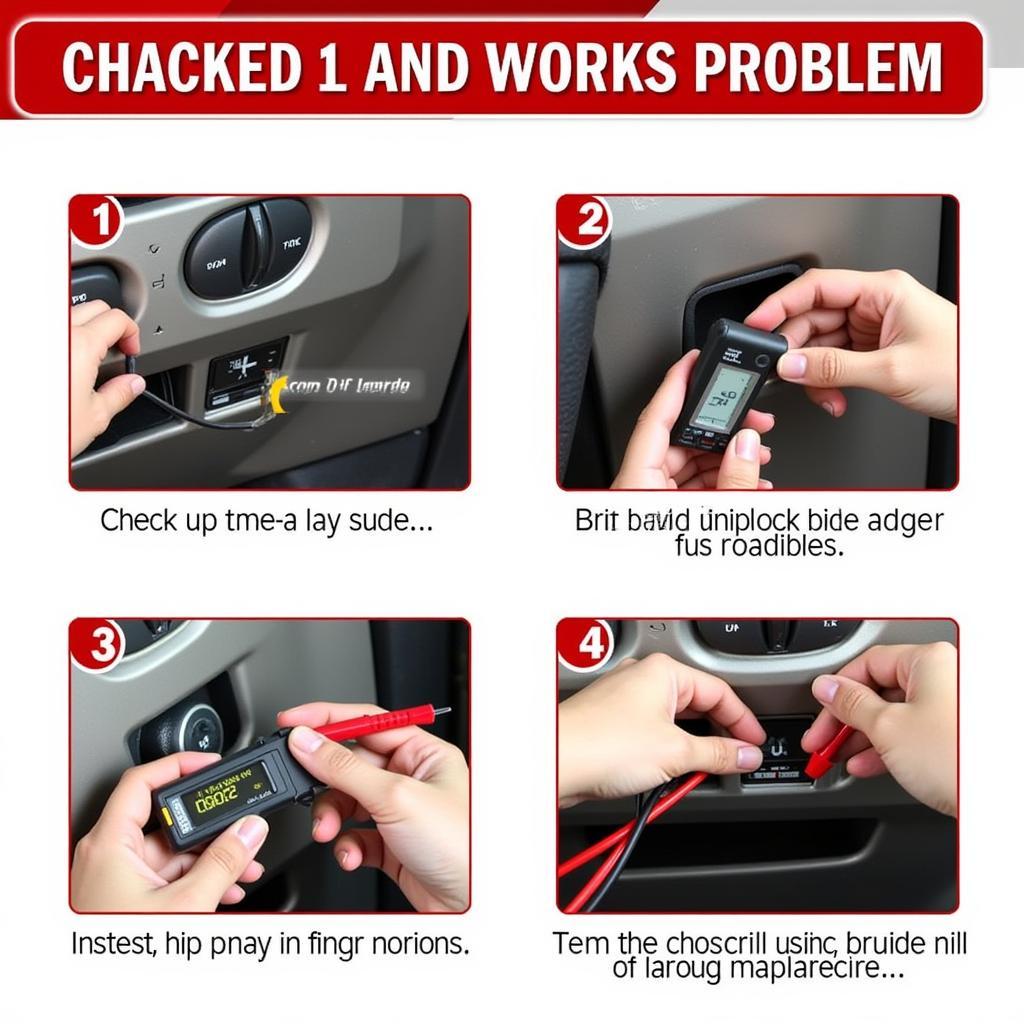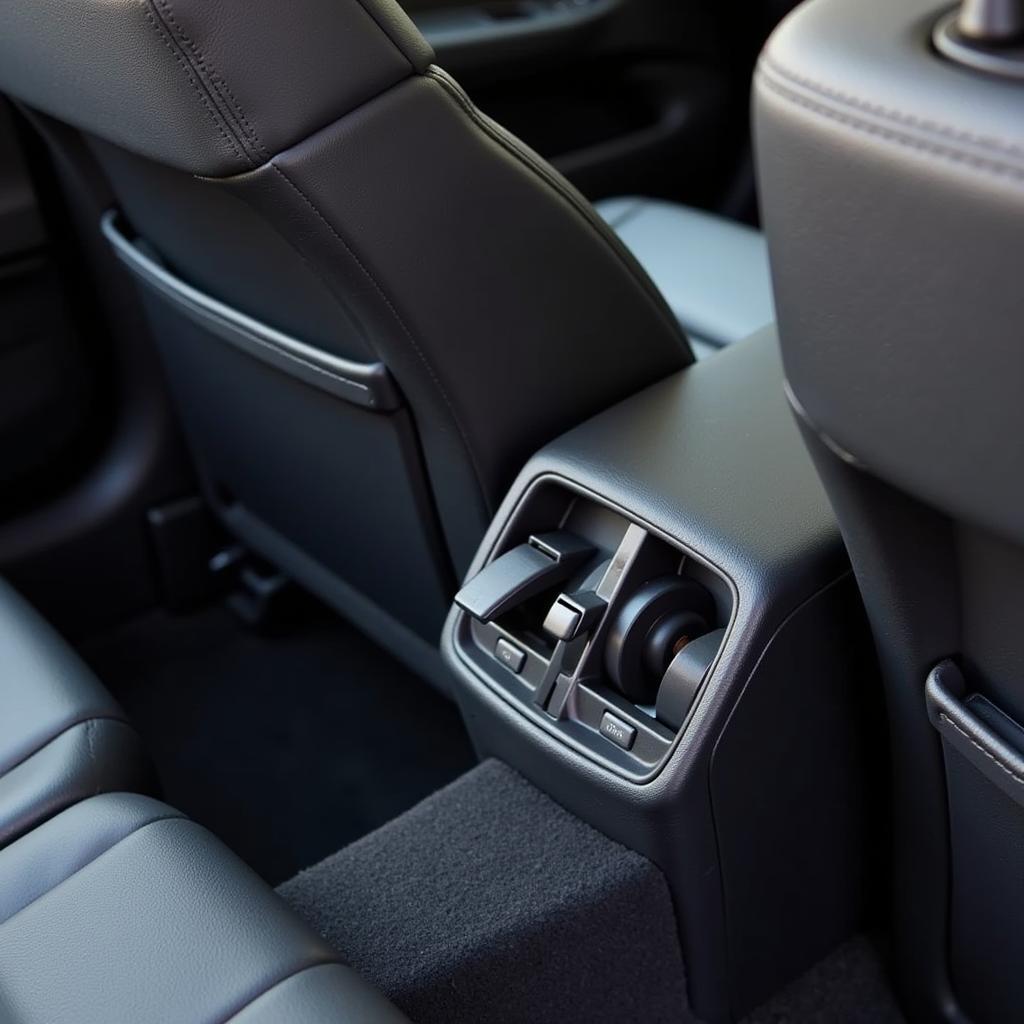A brake lamp warning light on your dashboard indicates a problem with your vehicle’s brake lights. This seemingly minor issue can have serious safety implications, making it crucial to understand what triggers this warning and how to address it. Learn more about troubleshooting this issue and preventing future occurrences. what is a brake warning lamp
The brake lamp warning light, often symbolized by an exclamation point within a circle or parentheses, is a critical safety feature in modern vehicles. It alerts you to a malfunction in your brake light system, which can range from a simple blown bulb to more complex electrical issues. Ignoring this warning can lead to accidents, as other drivers may not be aware of your intentions to slow down or stop. Understanding “what is brake lamp warning” is the first step to ensuring your safety and the safety of others on the road.
Understanding the Brake Lamp Warning Light
Why is the brake lamp warning light so important? Simply put, it’s your car’s way of saying “Hey, something’s wrong with your brake lights!” This can range from a single bulb being out to a complete system failure. A functioning brake light system is paramount for safe driving, allowing you to communicate your intentions to other drivers.
Common Causes of Brake Lamp Warnings
The most frequent cause of a brake lamp warning is a burned-out bulb. However, several other issues can trigger this warning:
- Blown Fuse: A blown fuse in the brake light circuit can cut power to the entire system.
- Faulty Brake Light Switch: The brake light switch, located near the brake pedal, can malfunction, preventing the lights from activating.
- Wiring Problems: Damaged or corroded wiring can disrupt the flow of electricity to the brake lights.
- Trailer Wiring Issues: If you frequently tow a trailer, problems with the trailer wiring can affect your vehicle’s brake lights.
Diagnosing the Problem
Diagnosing the root cause of the brake lamp warning involves a systematic approach. Start with the simplest and most common issue:
-
Check the Bulbs: Inspect all brake light bulbs for signs of burning or damage. Replace any blown bulbs with the correct type.
-
Inspect the Fuses: Locate the brake light fuse in your vehicle’s fuse box and check if it’s blown. Refer to your owner’s manual for the correct fuse location and amperage.
-
Test the Brake Light Switch: The brake light switch can be tested using a multimeter to check for continuity.
 Diagnosing Brake Lamp Warning Light Issues
Diagnosing Brake Lamp Warning Light Issues
“A quick visual inspection often reveals the culprit,” says automotive diagnostics expert, Dr. Robert Carter. “Most of the time, it’s a simple bulb replacement.”
Fixing the Brake Lamp Warning
Once you’ve identified the problem, fixing it can be relatively straightforward.
- Replacing Bulbs: Replacing brake light bulbs is usually a simple DIY task.
- Replacing Fuses: Replacing a blown fuse is equally simple, but make sure to use the correct amperage.
- Addressing Wiring Issues: Wiring problems may require professional assistance if you’re not comfortable working with electrical systems.
- Fixing Trailer Wiring: Trailer wiring issues can be tricky to diagnose and may involve checking the trailer’s wiring harness and connectors.
brake warning lamp check relay
Remote Diagnostics and Programming
In some cases, remote diagnostics and programming can be used to identify and resolve brake lamp warning issues. This involves connecting your vehicle to a diagnostic tool that allows a technician to access your vehicle’s systems remotely.
“Remote diagnostics can be incredibly helpful in pinpointing complex electrical issues,” adds Carter. “It can save time and money compared to traditional troubleshooting methods.”
 Remote Diagnostics for Brake Lamp Warning
Remote Diagnostics for Brake Lamp Warning
Preventing Future Brake Lamp Warnings
Regular maintenance can help prevent brake lamp warnings. Here are some tips:
- Regular Bulb Checks: Periodically check your brake lights to ensure they are all working correctly.
- Proper Wiring Maintenance: Keep your vehicle’s wiring in good condition by protecting it from damage and corrosion.
- Professional Inspections: Have your brake system inspected by a qualified mechanic during regular service appointments.
c1226 brake warning lamp ground short ford f150 1999
brake lamp warning light 2000 honda accord
buy a 1994 honda accord lx brake warning lamp sensor
Conclusion
Understanding what a brake lamp warning means and how to address it is vital for your safety on the road. Don’t ignore this important warning light. By taking prompt action, you can prevent potential accidents and ensure your vehicle’s brake system is functioning correctly. Regularly checking your brake lights is a simple yet effective way to avoid future brake lamp warnings.

